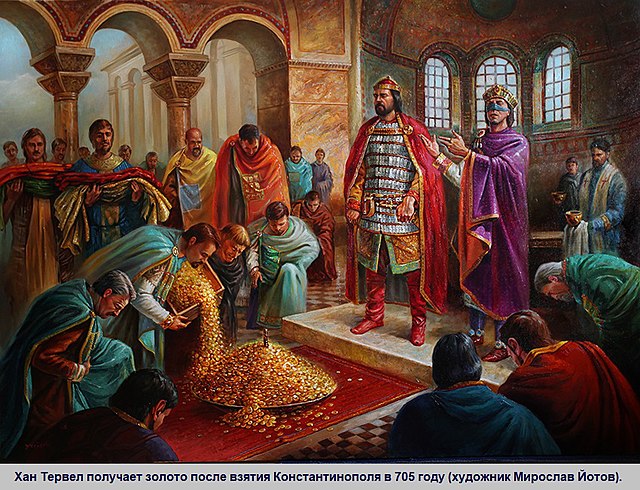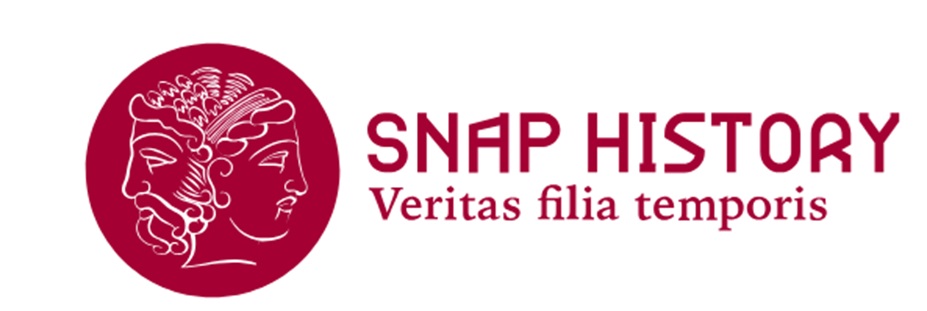Twice on the throne of Byzantium and twice fallen
The struggle for power of Justinian II Rhinotmetus

Year 705. The Bulgarian khan Tervel receives payment for the capture of Constantinople and military assistance to the emperor Justinian, who was restored to the throne, whose nose was cut off by political opponents in 695. - Wikicommons
After being dethroned and exiled to a monastery in Cherson, Justinian II devises his return to the imperial throne in Constantinople. He manages to escape once, seeking help from the Khazars. However, his movements are seen as suspicious by the imperial court, which orders the Khazars to hand over the former emperor. Warned in time, Justinian seeks refuge with Tervel, the Khan of the Bulgarians, and with his support, marches with the Bulgarian army towards Constantinople, besieging it. After days of attempts, with few men, the former emperor manages to enter through the aqueduct conduit, causing panic in the city. With the help of his supporters, Justinian II reclaims the throne in 705 and, for revenge, has the usurper Leontius killed, hangs many officials on the walls, and blinds the patriarch Callistus, who had dared to crown Leontius. The Emperor's revenge is relentless: he prepares a punitive expedition against Ravenna, which is put to the torch and deprived of its most important citizens. Finally, he prepares to punish Cherson in the same way. However, all forces now hostile to the sovereign gather in the city, including the Khazars. The rebels, along with the army and navy, march to Constantinople, where no one resists anymore: the gates are flung open and rebellion sweeps through the city. The crowd heads to the Imperial Palace, where the Armenian Bardanes Philippicus is named emperor while one of the officers captures Justinian II and beheads him, sending his regal head as a souvenir to Rome and Ravenna to be displayed in public. Thus ends, in 711, the double reign of the "noseless" emperor, twice on the throne of Constantinople and twice fallen, the second time along with his head.
- A., Kazhdan, Byzantium and its civilization, ed. it. edited by G., Arcetri, Laterza, Rome-Bari, 1995.
- G., Ostrogorsky, Storia dell’Impero bizantino, ed. it. edited by P., Leone, Einaudi, Turin, 2014.
- W., Treadgold, Storia di Bisanzio, ed. it. edited by G. Ravegnani, tr. it. edited by G., Garbisa, Il Mulino, Bologna, 2005.
- The Chronicle of Theofanes Confessor. Byzantine and Near Eastern History AD 284-813, ed. ing. edited by C., Mango, R. Scott and G., Geatrex, Claredon Press, Oxford-New York, 1997, 361-381, pp. 504-530.
Deborah Scarpato Master's Degree Student - Ca' Foscari University - Venice
2025-04-30
Salvatore Ciccarello
